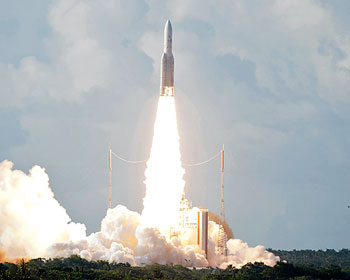INDIAN ARMED FORCES CHIEFS ON OUR RELENTLESS AND FOCUSED PUBLISHING EFFORTS

The insightful articles, inspiring narrations and analytical perspectives presented by the Editorial Team, establish an alluring connect with the reader. My compliments and best wishes to SP Guide Publications.

"Over the past 60 years, the growth of SP Guide Publications has mirrored the rising stature of Indian Navy. Its well-researched and informative magazines on Defence and Aerospace sector have served to shape an educated opinion of our military personnel, policy makers and the public alike. I wish SP's Publication team continued success, fair winds and following seas in all future endeavour!"

Since, its inception in 1964, SP Guide Publications has consistently demonstrated commitment to high-quality journalism in the aerospace and defence sectors, earning a well-deserved reputation as Asia's largest media house in this domain. I wish SP Guide Publications continued success in its pursuit of excellence.
- Appointments Committee of Cabinet approves one-month extension in service of Chief of the Army Staff
- Admiral Dinesh K. Tripathi assumes Command of the Indian Navy as 26th Chief of the Naval Staff
- Prime Minister witnesses 'Bharat Shakti' – a Tri-Services Firing and Manoeuvre Exercise in Pokhran, Rajasthan
- Interim Defence Budget 2024-25 — An Analysis
- Union Defence budget 2024
- Prime Minister Modi Commemorates Indian Navy Day in a Grand Ceremony
India's first military satellite GSAT-7 launched

India’s first defence satellite, GSAT-7, was successfully launched by European space consortium Arianespace’s Ariane 5 rocket from Kourou spaceport in French Guiana recently, giving a major push to the country’s maritime security.
Indian Navy will be the user of the multiband home-built communication satellite, expected to be operational by September end. The Rs. 185-crore GSAT-7 is the country’s maiden dedicated spacecraft for defence applications.
After a flight of almost 34 minutes, the satellite was injected into a geosynchronous transfer orbit (GTO) of 249 km perigee (nearest point to earth), 35,929 km apogee (farthest point to earth) and an inclination of 3.5 degree with respect to the equator. During August 31-September 4, three orbit-raising operations will be performed by the Indian Space Research Organisation (ISRO) to place the satellite into geostationary orbit of 36,000 km above the equator. By September 14, GSAT-7 is planned to be positioned in its orbital slot of 74 degree East longitude and subsequently the satellite’s communication transponders will be switched on.
The frequency bands of GSAT-7 will help space-based marine communications. It has coverage over India landmass as well as surrounding seas. “It’s important from security and surveillance points of view”, an ISRO official said.
GSAT-7 is an advanced communication satellite to provide wide range of service spectrum from low bit rate voice to high bit rate data communication. Its payload is designed to provide communication capabilities to users over a wide oceanic region including the Indian land mass. The launch cost for ISRO is around Rs. 470 crore, including insurance.





